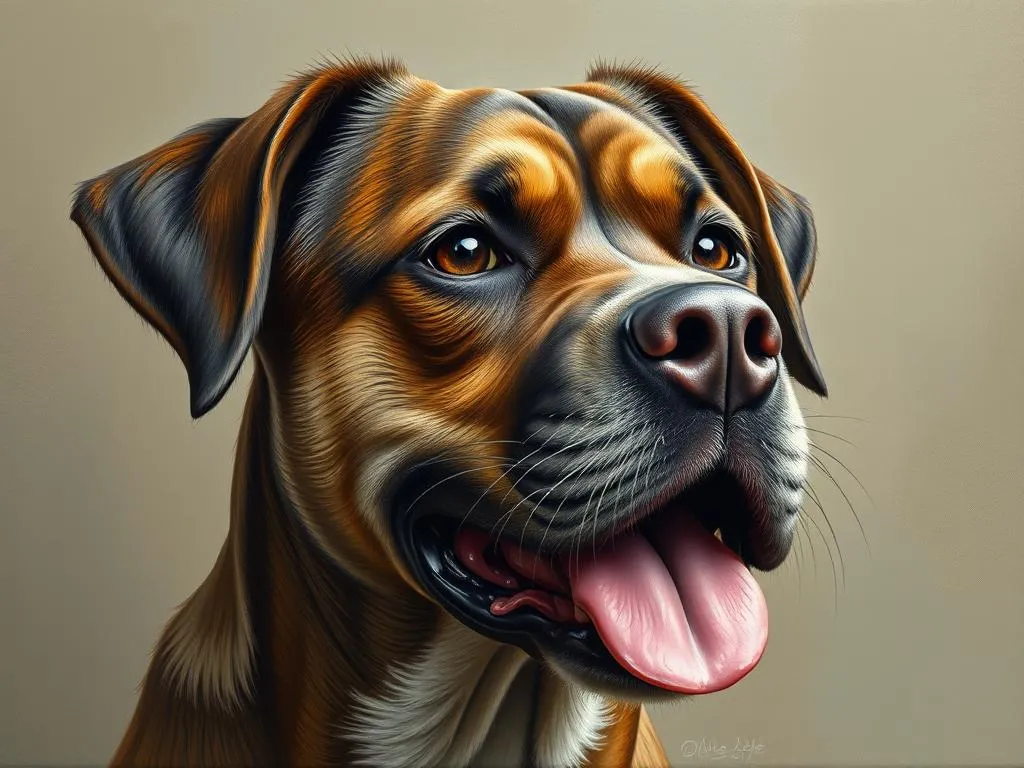
Introduction
Throughout history, dogs have not only been cherished companions but also captivating subjects for artists. From ancient civilizations to modern-day galleries, the presence of dogs in art speaks to their significance in human culture. Popular and famous dog paintings reflect the deep bond between humans and their furry friends, illustrating emotions ranging from loyalty and love to playfulness and companionship. This article delves into notable dog paintings, highlights influential artists, and explores the artistic styles that have shaped the portrayal of dogs in art.
The Historical Significance of Dogs in Art
Dogs as Companions in Art
Dogs have been depicted in art since ancient times. In ancient Egypt, dogs were revered and often featured in tomb paintings, symbolizing loyalty and protection. Similarly, in ancient Greece and Rome, dogs represented fidelity and were frequently included in sculptures and mosaics. Artists used dogs to convey a variety of themes, such as companionship, hunting, and even as symbols of the afterlife.
Evolution of Dog Depictions
The portrayal of dogs has evolved over centuries, transitioning from realistic representations to more stylized interpretations. During the Renaissance, artists began to appreciate the unique characteristics of different breeds, leading to more detailed and lifelike representations. The Baroque period further enhanced the emotional depth of dog portrayals, as artists like Sir Edwin Landseer infused their works with sentimentality, capturing the essence of canine companionship.
Notable Artists and Their Contributions
Famous Artists Known for Dog Paintings
Sir Edwin Landseer
Sir Edwin Landseer was a prominent British painter known for his realistic and emotive depictions of dogs and other animals. His works often featured dogs in domestic settings, highlighting their loyalty and affectionate nature. One of his most celebrated paintings, “A Distinguished Member of the Humane Society,” showcases a noble-looking dog, symbolizing the dignity of the breed. Landseer’s ability to capture the soul of his subjects has solidified his status as one of the most influential painters of dog art.
Francisco Goya
The Spanish master Francisco Goya also incorporated dogs into his works, albeit with a different approach. His painting “The Dog” features a solitary dog, partially submerged in sand, evoking feelings of isolation and despair. Goya’s ability to use animals as symbols of human emotion demonstrates the versatility of dogs in art, transcending mere representation to convey deeper meanings.
Other Noteworthy Artists
In contemporary art, several artists focus on dog-themed works, each bringing their unique style and perspective. Artists like William Wegman, known for his whimsical photographs of Weimaraners dressed in costumes, and Barkley L. Hendricks, who depicted dogs in vibrant, modern settings, are redefining the landscape of dog art today.
Art Movements Influencing Dog Paintings
Various art movements have left their mark on the depiction of dogs. The Romanticism movement, for instance, glorified nature and emotion, influencing artists to portray dogs as symbols of loyalty and freedom. Impressionist painters also embraced dogs, capturing their lively movements and playful interactions in a way that celebrated the essence of canine joy.
Iconic Dog Paintings to Know
List of Popular Dog Paintings
-
A Distinguished Member of the Humane Society by Sir Edwin Landseer
This painting features a majestic dog, showcasing its noble features and proud stance. Landseer’s attention to detail and ability to convey emotion make this piece a classic representation of canine loyalty. -
The Dog by Francisco Goya
A haunting portrayal of a dog that reflects themes of loneliness and existential dread. Goya’s use of color and composition draws the viewer into the dog’s emotional state, making it a powerful work of art. -
Dogs Playing Poker by Cassius Marcellus Coolidge
This series of paintings humorously depicts dogs engaged in a poker game, capturing their personalities and behaviors in a lighthearted manner. The charm and whimsy of this series have made it a staple in pop culture.
Analysis of Styles and Techniques
Dog paintings can be categorized into realistic and abstract representations. Realistic styles focus on accurately depicting the physical traits and expressions of dogs, emphasizing details such as fur texture and eye expression. In contrast, abstract representations may use bold colors and exaggerated forms to convey the essence of dogs rather than their literal appearance.
The use of light, shadow, and composition also plays a significant role in dog paintings. Artists often employ dramatic lighting to enhance emotional impact, while composition guides the viewer’s eye and emphasizes the relationship between the dog and its surroundings.
The Cultural Impact of Dog Paintings
Dog Paintings in Pop Culture
The influence of dog art extends beyond galleries into pop culture. Famous dog paintings often appear in movies, television shows, and literature, showcasing the enduring appeal of our four-legged friends. For example, the iconic “Dogs Playing Poker” has been referenced in various media, symbolizing camaraderie and humor among friends.
Dog Paintings as Collectibles
The market for dog art has grown significantly, with collectors seeking both historical and contemporary pieces. Notable auctions have featured famous dog paintings, often fetching high prices. The combination of artistic merit and emotional resonance makes dog art a desirable addition to any collection.
Dog Paintings in Modern Art
Contemporary Trends in Dog Art
Modern artists are exploring new styles and techniques in dog art, often blending traditional methods with contemporary themes. Many contemporary dog artists focus on the emotional bond between humans and dogs, creating pieces that resonate with pet owners. This evolution reflects society’s increasing appreciation for the role dogs play in our lives.
The Role of Technology in Dog Art
Technology has transformed how artists create and share their work. Digital art allows for endless experimentation with styles and techniques, enabling artists to create unique interpretations of dogs. Additionally, social media platforms have given rise to a community of dog art enthusiasts, making it easier for artists to showcase their work and connect with potential buyers.
How to Appreciate and Collect Dog Paintings
Tips for New Collectors
For those interested in collecting dog paintings, it’s essential to consider what resonates personally. Look for pieces that evoke emotions or memories associated with your own experiences with dogs. When purchasing art, consider whether you prefer original works or prints, as both have their own value and appeal.
How to Display Dog Art
Displaying dog art can enhance your home decor and showcase your passion for dogs. Consider creating a gallery wall with various dog paintings that complement each other in style and color. Proper framing and lighting can elevate the presentation, drawing attention to the artwork and creating a focal point in your space.
Conclusion
The world of popular and famous dog paintings is rich and diverse, reflecting the historical significance of dogs in art and society. From the realistic portrayals of artists like Sir Edwin Landseer to the emotional depth found in Francisco Goya’s work, these paintings capture the essence of our beloved canine companions. The cultural impact of dog art continues to grow, with modern artists exploring new avenues of expression and technology shaping the way we appreciate dog art today. As we reflect on these artistic representations, we are reminded of the enduring bond between humans and dogs, a relationship beautifully captured through the lens of art.









